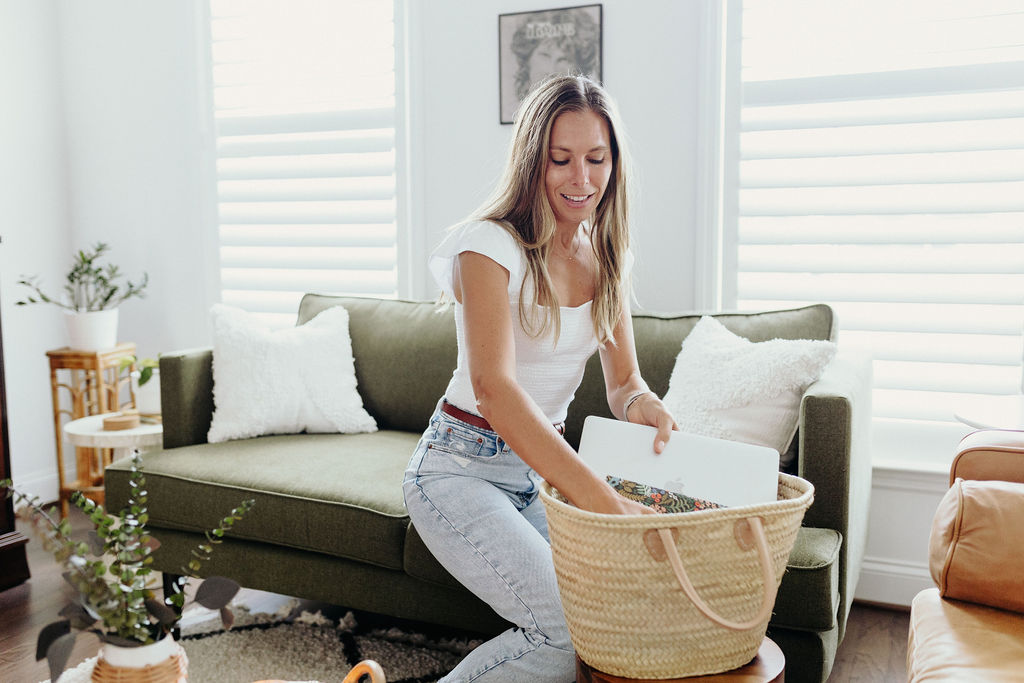Create A WordPress Blog Featured Post Homepage Section
This is definitely a more advanced feature, so stay with me and try to not get frustrated.
A few key things to note before you start customizing your template.
When you add your Launch Lounge template to your Showit account you will see that you have two homepages available—one under Pages tab in the left side bar and the other listed under Blog Templates.

So how do you decide?
If you want to automatically pull your latest blog posts from WordPress, then you will want to go with the homepage under Blog Templates. If you do not want to manually add/update your WordPress titles, links, and featured images—then you will want to chose the homepage under the Pages tab.
Let’s go into detail on how to create a dynamic homepage that automatically populates content from your WordPress posts.
Make sure you will want to start with the homepage under Blog Templates. You will also need to have your site set up with a WordPress blog before you can move onto Step Two.
STEP ONE: ADD YOUR TEMPLATE TO SHOWIT
After you purchase your Launch Lounge Showit template you will get an email with a Unique Share Key. This key will allow you to add the template to your Showit account.
Head over to app.showit.co to log into Showit—and if you don’t have an account yet go to showit.co to start a free trial. There is no need to opt for a paid version yet, the trial will work for now.
Once you’ve logged into our Showit account, the first thing you want to do is select your website. When you’re in the dashboard, select your account profile (name) in the bottom left-hand corner. From here, you want to select Add Design to Library.
Now, you can copy and paste the Unique Share Key assigned to the template that you want to add to the library. Select the template from the Showit library.
STEP TWO: CREATE A HOMEPAGE IN WORDPRESS
Go to your WordPress account. Click on Pages in the left side bar and click on Add New.
Name the new page – Homepage – and make sure the permalink is also homepage and hit Publish. You do not need to add any content to this page.
STEP THREE: SET UP HOMEPAGE SETTINGS IN SHOWIT
Select the Homepage listed under Blog Template. If you do not have a Homepage currently under the Blog Template tab, you will want to click on the Homepage under the Pages tab and Duplicate to WordPress. Click on Template Info in the right side bar and then click the WordPress Template dropdown. Select Custom and type in page-homepage under Template Custom Name if it is not already there.
STEP FOUR: SET UP A FEATURED POSTS SECTION
If you purchased a Launch Lounge template, you will already have a featured post blog canvas set up and ready to launch. If you would like to add new canvas, you will have to complete a few steps:
- Create a canvas with your featured post layout. Make sure you use the proper placeholders you want shown for the post: Featured Image, Post Title, Post Top Category, etc. from the right side bar.
- Create a canvas view for each post. Move the placeholder post content into the view folder. Make sure you divide each post into it’s own canvas view.
- Change the canvas type to WordPress: Posts View Lookup
- Define the Tag Name Slug: (typically “featured”) and the Number of Posts to show. If you choose to add a tag name slug, be sure to create that tag in WordPress and add the tag to the posts you want to load in the featured posts section.
- To populate the most recent posts in the canvas, leave the Category and Tag slug fields blank.
STEP FIVE: PUBLISH
Once you have complete all of these steps, you are ready to publish your site. Head on over to your site [yourdomain].com and make sure it looks good on desktop and mobile.
High five, that was not easy!
Here is a video to walk you through the steps! Don’t forget to check the mobile version as well.

